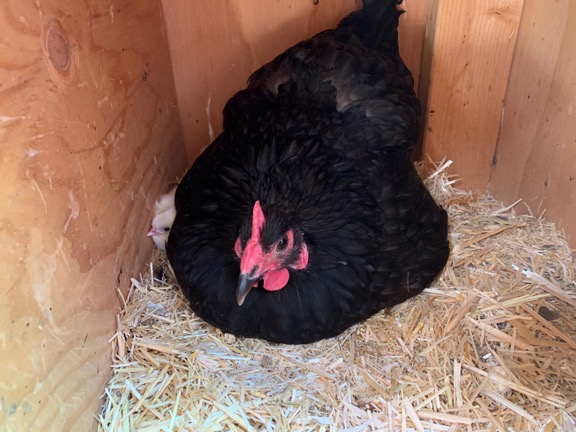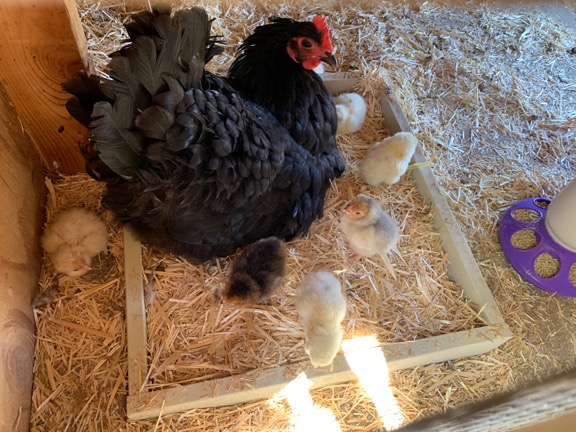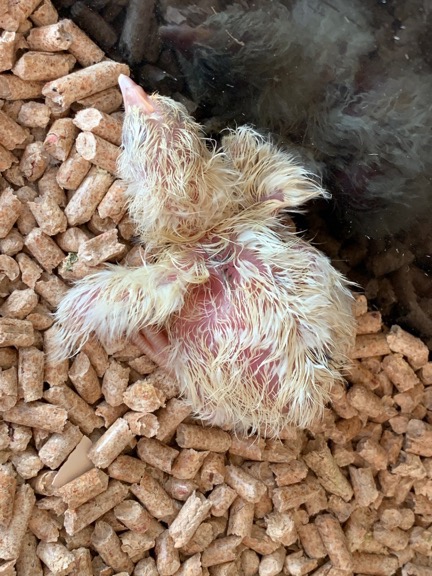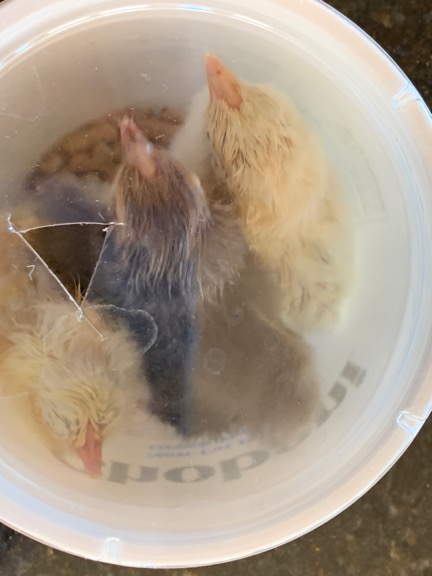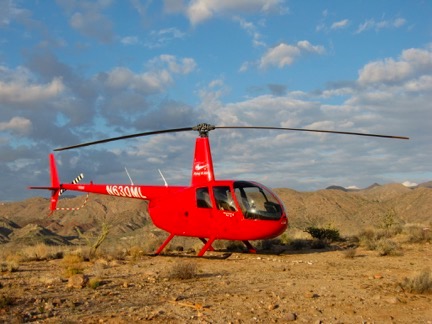I finally replace my old telescope.
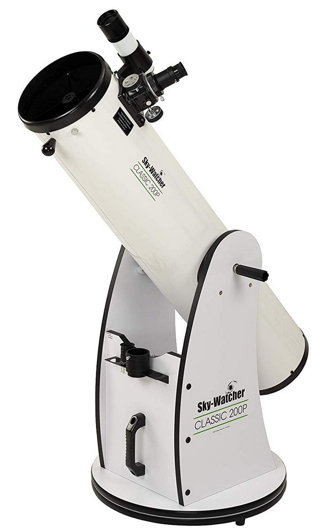
My old telescope looked a lot like this modern knockoff. Meade no longer makes them.
Years and years ago, not long after moving into my Arizona home with my future wasband, I bought an 8″ Dobsonian telescope. We’d seen Jupiter and Saturn through the big telescopes at Lowell Observatory in Flagstaff, AZ and were hooked. The Dobsonian was an affordable, easy to use, and relatively powerful scope, although with hindsight I came to realize it was not the right choice. It had no tracking capabilities, making it a challenge to watch an object for more than a few seconds and making any attempt at photography an utter failure.
The Old Telescope in Washington
I moved the telescope to my new home in Washington when I left Arizona during my crazy divorce. I optimistically set it up in my living room near the door to my big open deck right after the house (and deck) were finished. I think I used it once up there. Too much light pollution from nearby Wenatchee.
Another time, at the request of a friend, I brought it down to the driveway so we could watch a conjunction of Jupiter (or Saturn?) with the moon. The two objects didn’t clear the cliffs behind my house before my friends lost patience and left. I sent the telescope with them so they could experiment with it on their own.
A year or two passed. I realized quite realistically that I’d likely never use the telescope because of the combined problem of local light pollution, difficulty in moving the telescope elsewhere, and the original problem of lack of tracking. So I sold it on Craig’s list. The guy who bought it knew a lot more about it than I did and realized he was getting a good deal. I was just glad to get it out of the corner of my living room.
The New Telescope
Time went by. Light pollution in the Wenatchee area only got worse. I’m still trying to figure out why so many people need floodlights in their yards that shine upwards. (WTF?) Although my street is wonderfully dark with few homes, most of which don’t have floodlights, the ambient light is so bright that the only time my home ever gets dark is when it’s foggy out at night.
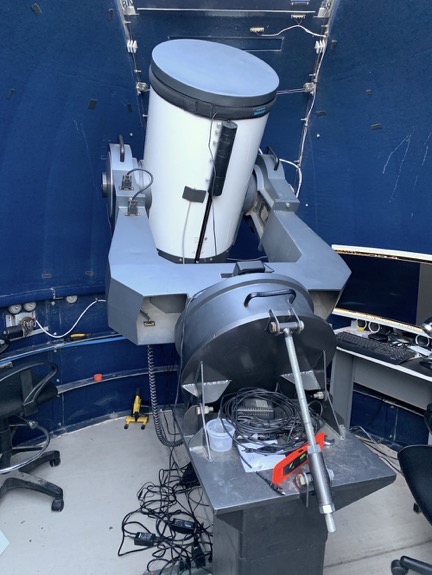
Here’s Jan’s new (to him) 16 inch telescope. He needed some modifications done to his little observatory to get it in there. He uses it for astrophotography and can operate it from a laptop inside his house. Check out his photos here.
But I travelled every winter and spent a lot of time in places with truly dark night skies. I started getting interested in astronomy again.
I also had a friend with an observatory in his backyard. He was extremely knowledgeable about telescopes and, after I accompanied him to look at a 16″ scope to replace his 12″ scope, I asked him to help me find a telescope I could travel with. The main qualification: it had to have computerized tracking.
Jan got right to work and found a nice scope for a good price in the Palm Springs area. Trouble is, I was home in Washington and not prepared to drive all the way down there to see and possibly fetch it. So he held off until I returned to Arizona this winter. I missed his first message with an option and it sold before I followed up. But I was on it for his second lead and wound up buying it.
It’s a 2003 Meade LX200 GPS in excellent condition, with tons of eyepieces and a set of filters. After checking it out with its owner, we packed it in its original box and foam, which makes it much safer to transport. It came with everything I needed to use it. And although I’ve since seen them listed for over $1,400 used, I only paid $700 for this one. A good deal.
Working Out the Bugs
Jan very graciously helped me set it back up the first time and showed me how to use it. We immediately ran into difficulties. For some reason, it wouldn’t align properly. I wouldn’t pick up GPS data from the GPS. It wouldn’t find stars and it wouldn’t track them.
I honestly didn’t think the seller had knowingly ripped me off. He had wanted me to come the night before so he could demonstrate it with something to see. I’m a decent judge of people and he did not act as if he was trying to pull a fast one. He even texted me after I left, thanking me and telling me that he hoped I enjoyed it.
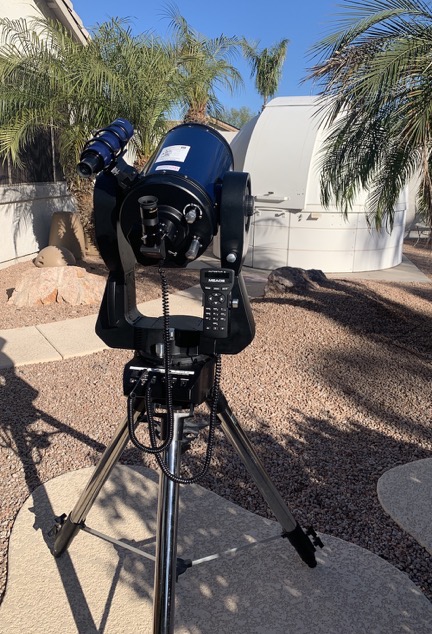
Here’s my telescope set up in Jan’s backyard one morning. You can see his observatory beyond it.
We worked on the problems over several consecutive evenings. I was staying at Jan’s house so it was easy. At one point, Jan was convinced that I needed a new AutoStar controller — the device that connects to the telescope and tells it what to do. Replacing the batteries in it didn’t seem to help. Then I asked Jan to use his computer to update the firmware in the controller. He had a PC; I only have Macs. He did that on the third day and that evening we got everything working nearly perfectly. We suspected that the controller had gotten “confused” by sitting idle so long, possibly with bad batteries.
I packed up the telescope and stored it and its box of parts and tripod in Jan’s garage. I was going to Tucson for about a week and had no reason to take it with me since I wouldn’t have time to set it up and use it.
Going Solo
Jan kept telling me to read the manual and I kept trying. It was all a mystery to me so it became an excellent sleep aid while I was in Tucson.
But things changed when I returned from my trip. I fetched the telescope from Jan’s garage and stowed it in my utility trailer. I spent about a week in downtown Wickenburg, where I was showing and selling my jewelry at a big annual Art Show. Then I went off into the desert where I found an excellent campsite for the next 10 days.
One of the things I’d bought for the telescope (and had shipped to Jan’s house) was a lightweight telescope cover. The beauty of living in a desert environment is that there’s usually very little moisture in the air. That means little or no morning dew. And little rain. So I could set up the telescope near my camper, use it at night, cover it up, and not have to worry about it getting damaged during a typical 24-hour period. So I set it up, using the manual — which now had my attention — and got it all ready to use.
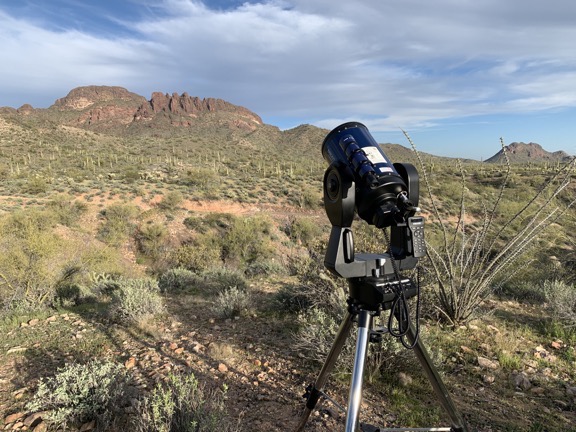
My telescope set up in the desert at my campsite southwest of Vulture Peak near Wickenburg, AZ.
I got it aligned by myself on the second try. The key, I realized, was to use the AutoAlign feature, which automatically figures out where it is, which way it’s pointed, and how it’s angled. All you do is fine-tune its view when it points to two different very bright stars. Once the alignment is done, you can use the AutoStar controller to point to any indexed object. I looked at Venus, the moon (which was a waning crescent at the time), Betelgeuse (which has been in the news a bit lately), the Pleiades, and the Great Nebula. In each instance, I had to adjust the view the controller suggested but, once that was done, the telescope tracked like a dream.
I also started experimenting with a WiFi device I’d bought for the telescope that let me control it with my iPhone using an app called Sky Safari. That made navigating a lot easier. It also gave me access to an “audio tour” of many night sky objects: a narrator’s voice tells you a little about the object you’re looking at enhancing the viewing experience.
I started playing with eyepieces that would change the magnification and field of view of the telescope. I had eight eyepieces, many of which looked as if they’d never been used. I discovered that stronger magnifications worked great on objects high in the sky but were too blurry for items near the horizon. Too much heat coming off the ground, making waves in the air.
I got to know a group of four people with a dog who hiked past my campsite every evening. One evening, they saw me messing with the telescope and I invited them to come back later to do some star gazing. They returned when it was fully dark and I showed them the same things I’d seen (except the moon, which was no longer in the night sky), along with some double stars and the Andromeda galaxy. This is something I never would have been able to do with the old Dobsonian because I’d have to keep re-finding the object every minute or so. They were suitably wowed.
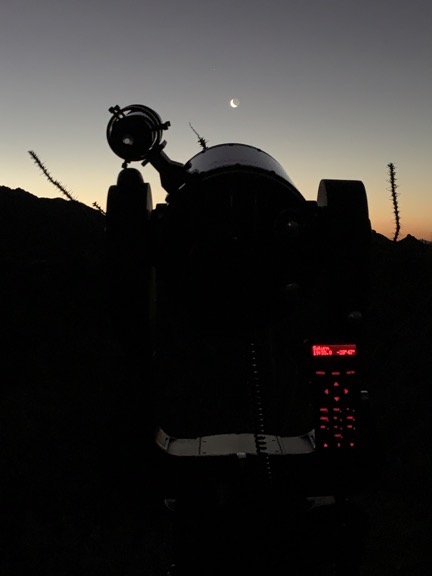
Dawn was in the same direction as the glow from Phoenix, so I didn’t do much observing in that direction, but I did manage to catch sight of a waxing crescent moon, with Mars, Jupiter, and Saturn all lined up in the morning sky.
I learned that the moon, Mars, Jupiter, and Saturn were in the early morning sky, just above the horizon at sunrise. I woke on a morning with an absolutely clear view to the southeast and managed to align the telescope before it got too light to see anything. I saw four moons around Jupiter and Saturn with its rings. Mars was a reddish blur.
During this time, I watched the weather carefully. When rain appeared in the forecast, I disassembled the telescope and put it away for the rest of my stay at that site.
Beyond the Basics
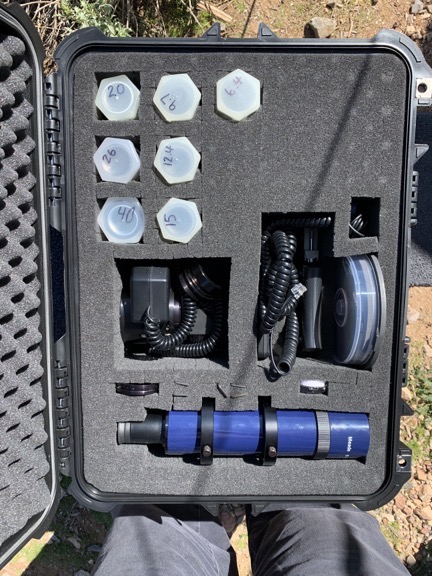
Here’s the nearly finished setup for my telescope accessories. After shooting this photo I found yet another eyepiece and added it with the others. There are two layers of foam; I have to lift the top layer to get to items beneath it.
Because I didn’t like the idea of having two separate boxes for carrying around the eyepieces and other accessories needed to run the telescope, I invested $50 at Harbor Freight on a waterproof case with foam insert. I spent about an hour laying out all the accessories and cutting the foam to fit it all in. This freed up the fancy padded Meade box that the eyepieces lived in and made a more secure storage area for the spotting scope and other more delicate items. Now I have just three things to tote around: the telescope in its original padded box, the tripod (which I may make a bag for), and this new box.
I’d like to get a similar case for the telescope itself. Jan has a canvas one that fits the foam for his similar 8″ telescope, but I prefer a hard case with wheels. Still, I’m not interested in spending $400+ to buy one and to have the added weight to tote around. We’ll see what I find without looking too hard.
I also bought an external battery at Harbor Freight. Designed to jump start a car, it also has 12 volt receptacles and USB ports. The telescope came with a DC power cable so it could be used without batteries; the previous owner said he used to plug it into his car when he was using it away from home. I bought a cable that converts that to something that could be plugged into a wall so I could use it with any common power source. Otherwise, it needs 8 C batteries, which I’d hate to burn through.
The Verdict
Although I wish the telescope was smaller and lighter — the tripod weighs about 30 pounds and the telescope weighs about 40 pounds — I can’t complain about the optics, operation, or view. It’s the telescope I wish I’d bought back in the late 1990s when I first moved to Arizona and got to enjoy dark skies. It fits fine in the back seat area of my truck or in my little cargo trailer. I can easily imagine taking it on camping trips or on nighttime outings with friends.
As my winter travels wind to an end, I expect to set it up in at least two more places: the desert at Borrego Springs, where I can share views with my good friend Janet before we part ways until next winter, and possibly Death Valley National Park, where I might detour just to check out the night skies. Next year, it’ll be part of my travel gear again.



